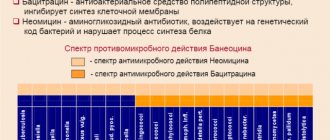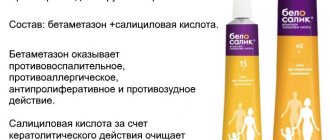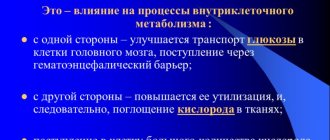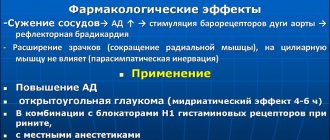There are restrictions during pregnancy
Has restrictions when breastfeeding
Has restrictions for children
Has restrictions for older people
Has limitations for liver problems
Has limitations for kidney problems
Wessel Due F is an anticoagulant drug produced from an extract of the intestinal mucosa of pigs. If it is necessary to select similar treatment options at a lower cost, it is possible to turn to the use of other effective drugs that prevent blood clots.
Such popular analogues of Wessel Due F as Angioflux, Enixum, Fragmin and others have almost the same principle of action, but the course of treatment with them will be much cheaper. Replacement is also relevant in cases where the original drug is not suitable (for example, Angioflux is recommended for diabetes).
The drug is effective for vascular dementia and other pathologies that require the prescription of anticoagulants in order to influence hemostasis, namely the blood clotting process. The basic active substance is sulodexide, a natural mixture of glycosaminoglycans.
Definition of anticoagulant
Main scope includes:
- unspecified encephalopathy;
- retinopathy caused by diabetes;
- pathologies of arteries, arterioles or capillaries with concomitant pathologies;
- glomerular diseases in diabetes mellitus;
- peripheral vascular lesions caused by concomitant diseases.
The drug helps normalize blood viscosity and restore vascular endothelial cells. Increases the level of tissue plasminogen activator contained in the blood. Wessel Due F is not compatible with other anticoagulants due to the risk of bleeding. The drug cannot be combined in the same syringe with other medications.
Composition and release form
| Injection | 1 amp. |
| sulodexide | 600 LE |
| excipients: sodium chloride - 18 mg; water for preparing injections - qs up to 2 ml |
in ampoules of 2 ml; There are 10 ampoules in a box.
| Capsules | 1 caps. |
| sulodexide | 250 LE |
| excipients: sodium lauryl sulfate - 3.3 mg; silicon dioxide colloid - 3.0 mg; triglycerides - 86.1 mg | |
| capsule composition: gelatin - 55.0 mg; glycerin - 21.0 mg; sodium ethyl p-hydroxybenzoate - 0.24 mg; sodium propyl paraoxybenzoate - 0.12 mg; titanium dioxide (E171) - 0.30 mg; red iron oxide - 0.90 mg |
25 pcs in blister; There are 2 blisters in a box.
Sulodexide, instructions for use (Method and dosage)
The dosage regimen and duration of treatment depend on the form of release and the disease and are determined by the doctor.
Sulodexide, instructions for use
The tablets are taken orally a few hours after meals or an hour before meals. Intramuscular or intravenous is also indicated .
Treatment begins with intramuscular injections of 600 LE per day for 15-20 days. Then they switch to the tablet form of the drug. Drink 250 LE twice a day. The duration of treatment is one month.
The course can be repeated after six months.
Pharmacodynamics
The fast-flowing heparin-like fraction has an affinity for antithrombin III, and the dermatan fraction has an affinity for heparin cofactor II. The anticoagulant effect is due to the affinity for heparin cofactor II, which inactivates thrombin.
The mechanism of antithrombotic action is associated with the suppression of activated factor X, with increased synthesis and secretion of prostacyclin (PGI2), with a decrease in the level of fibrinogen in the blood plasma, etc.
The profibrinolytic effect is due to an increase in the blood level of tissue plasminogen activator and a decrease in the content of its inhibitor.
The angioprotective effect is associated with the restoration of the structural and functional integrity of vascular endothelial cells, with the restoration of the normal density of the negative electrical charge of the pores of the vascular basement membrane. In addition, the drug normalizes the rheological properties of the blood by reducing the level of triglycerides (stimulates the lipolytic enzyme - lipoprotein lipase, which hydrolyzes triglycerides that are part of LDL).
Reduces blood viscosity, inhibits the proliferation of mesangial cells, and reduces the thickness of the basement membrane.
Pharmacodynamics and pharmacokinetics
This substance increases prothrombin time and BOAT by activating the reaction of prothrombin with AT3 and KG2 factors. The medicine has a strong antithrombotic effect, inhibits factor Xa , and stimulates the synthesis of prostacyclin . The antithrombotic effect of taking the drug is significantly higher than the other listed effects. The substance ranks second in factor Xa activity ( heparin ). As a result of treatment with the drug, the level of fibrinogen the fibrinolytic system is stimulated .
The angioprotective properties of Sulodexide are due to the ability of this compound to restore the structural integrity and functioning of endothelial cells, the normal density of the negative charge of the pores of the basement membrane in these cells. The medicine thins the blood and inhibits the proliferation of mesangium cells .
After penetration into the systemic circulation, about 90% of the substance is absorbed by the vascular endothelium and small intestine. Metabolism of the drug occurs in the liver. desulfation reactions , remains in tissues longer, and has high antiprombotic activity . The product has high bioavailability. It is excreted from the body through the kidneys and bile; the half-life depends on the dosage taken.
Pharmacokinetics
90% is absorbed in the vascular endothelium (creating a concentration in it that is 20–30 times higher than its concentration in the tissues of other organs) and is absorbed in the small intestine. Metabolized in the liver and kidneys. Unlike unfractionated heparin and low molecular weight heparins, sulodexide is not subject to desulfation, which leads to a decrease in antithrombotic activity and significantly accelerates elimination from the body. Dose distribution across organs showed that the drug undergoes extracellular diffusion in the liver and kidneys 4 hours after administration.
24 hours after intravenous administration, urinary excretion is 50% of the drug, and after 48 hours - 67%.
Preparations containing (Sulodexide analogues)
Level 4 ATC code matches:
Angioflux
Hemapaxan
Fragmin
Wessel Due F
Fraxiparine
Clexane
The most common analogues of Sulodexide: capsules and solutions for injections Vesel Due F , Angioflux .
Indications for the drug Wessel Due F
angiopathy with an increased risk of thrombosis, incl. after myocardial infarction;
cerebrovascular accidents, including the acute period of ischemic stroke and the period of early recovery;
discirculatory encephalopathy caused by atherosclerosis, diabetes mellitus, hypertension;
vascular dementia;
occlusive lesions of peripheral arteries of atherosclerotic and diabetic origin;
phlebopathy, deep vein thrombosis;
microangiopathy (nephropathy, retinopathy, neuropathy) and macroangiopathy (diabetic foot syndrome, encephalopathy, cardiopathy) in diabetes mellitus;
thrombophilic conditions, antiphospholipid syndrome (together with acetylsalicylic acid, as well as following low molecular weight heparins);
Treatment of heparin-induced thrombotic thrombocytopenia (HTT), since the drug does not cause or worsen HTT.
Reviews of Sulodexide
Some reviews about Sulodexide from the Internet:
- “...I have insulin-dependent diabetes mellitus. The doctor prescribed the drug to me for problems in the blood vessels of the feet. The medicine helped, there were no exacerbations so far”;
- “... During pregnancy I had VA and APS, Sulodexide was prescribed. By week 36 I stopped drinking it on the advice of my doctor. It was difficult, but the birth went well and on time”;
- “... My mother is 74 years old. After completing the course, the blood clot in my right leg resolved. The medicine is expensive, but it justifies the cost; there were no adverse reactions during treatment.”
special instructions
If necessary, it is recommended to use the drug under the control of a coagulogram. At the beginning and end of treatment, it is advisable to determine the following indicators: aPTT (normally - 30–40 s, depending on the type and concentration of the activator used, it can be 25–30 or 35–50 s), antithrombin III content (normally - 210–300 mg/l), bleeding time (normal according to Duques - 2-4 minutes), clotting time of unstabilized blood (normal according to the Milian method as modified by Morawitz - 6-8 minutes). Wessel Due F increases normal values by approximately one and a half times.
pharmachologic effect
Manufacturer: ALFA WASSERMANN (Italy)
Release form: capsules, injection solution
Active ingredient: sulodexide
Analogues: Clexan, Detralex, Angioflux
Wessel Due F is a direct-acting anticoagulant, which, by affecting the blood coagulation system, normalizes its rheological parameters (viscosity). This process leads to improved blood flow and inhibits the formation of blood clots. They often accompany heart and vascular diseases, causing serious complications.
The effect of the drug "Angioflux"
The drug belongs to anticoagulant agents. Considered a heparinoid. It has antithrombotic, angioprotective, hypolipedic and fibrinolytic effects on the body. The medicine contains an active substance made from the mucous membrane of the small intestine of cattle.
The medicine reduces the concentration of fibrinogen in plasma. Increases the level of plasminogen in the blood. Analogues of "Sulodexide" (including the drug "Angioflux") can be purchased at any pharmacy kiosk at an affordable price.
Reviews of the products "Angioflux", "Sulodexide", "Wessel Due F"
The presence of a clot in the bloodstream is fraught not only with serious complications, but also with death. Therefore, experts often prescribe the drugs “Angioflux”, “Wessel Due F”, “Sulodexide”. The price of medicines is quite high. However, patients claim that it is possible to order medications cheaper from online pharmacies.
Are analogues of “Sulodexide” suitable for everyone? Side effects develop quite rarely. Reviews testify to this. The preparations have a natural base. Experts say that the list of contraindications is also not long. However, without a doctor’s recommendation, you should not use the products “Angioflux”, “Wessel Due F”, “Sulodexide”. Reviews show that improper use of medications can lead to a worsening of the patient's condition.
Prevention of thrombophlebitis is very important. It is advisable to carry it out in consultation with a doctor. A specialist will be able to advise which analogues of Sulodexide are best used in a particular case.
"Sulodexide"
Tablets are classified as hematotropic and anticoagulant agents. They are used for all types of angiopathy, which are accompanied by the formation of blood clots and diabetes mellitus. Also prescribed for disorders of cerebral and cardiac circulation. The medicine should be taken orally (one or two capsules).
Sulodexide should only be used as prescribed by a doctor. Instructions for use should be studied before starting treatment. The medication is not used for hemorrhagic diathesis, which results in impaired blood supply. The tablets are contraindicated during pregnancy and lactation.
When studying the instructions, you should pay attention to drug interactions. The medication is not used in conjunction with drugs that affect the hemostatic system. These can be antiplatelet agents and indirect anticoagulants.
Indications and contraindications
The medicine is prescribed for various forms of angiopathy, which is accompanied by an increased tendency to thrombus formation. The remedy has proven itself well for cerebrovascular accidents, in the early stages after ischemia of the brain and heart. It is also widely used for dyscirculatory encephalopathy, which causes high blood pressure and diabetes mellitus. For deep vein thrombosis, the drug "Angioflux" can also be used.
The medication should not be prescribed for hemorrhagic and other diseases that are accompanied by blood clotting disorders. Treatment is contraindicated during pregnancy and lactation. In rare cases, hypersensitivity to individual components of the drug may develop. The drug “Sulodexide” has the same indications for use. Instructions for using this product will be described below.
Dosage and side effects
The dosage of the drug depends on the severity of the disease, as well as the individual characteristics of the patient’s body. In most cases, the medication is administered intravenously (2 ml per day).
Side effects may occur in the digestive system. They manifest themselves in epigastric pain, nausea, and vomiting. A reaction in the form of redness and itching may occur at the injection site. During treatment, you need to monitor your blood coagulogram. Similar side effects may develop when using Sulodexide. The price of the drug "Angioflux" is about 1500-2500 rubles.








